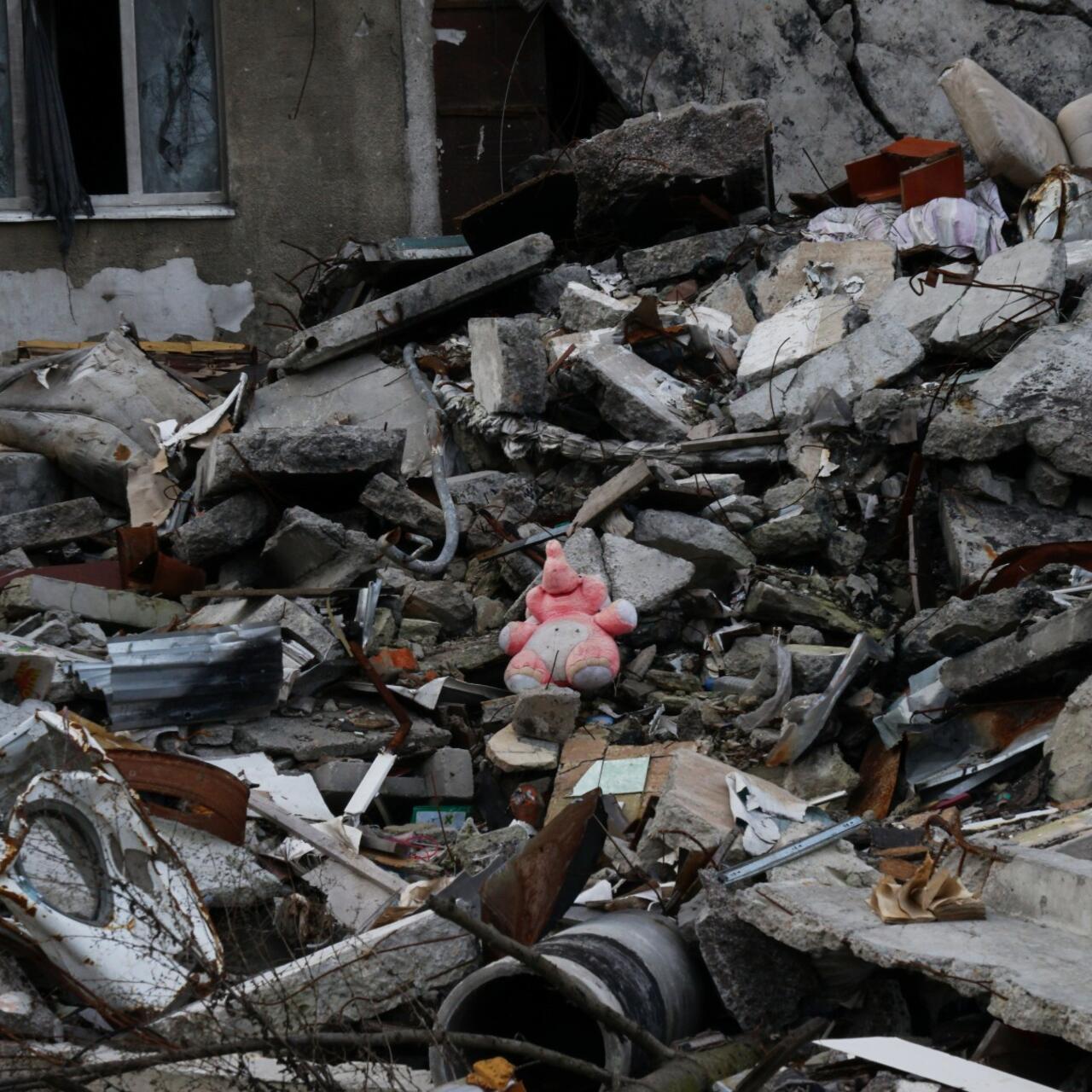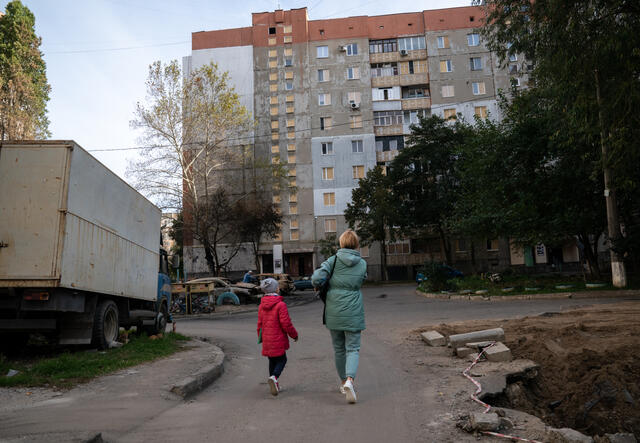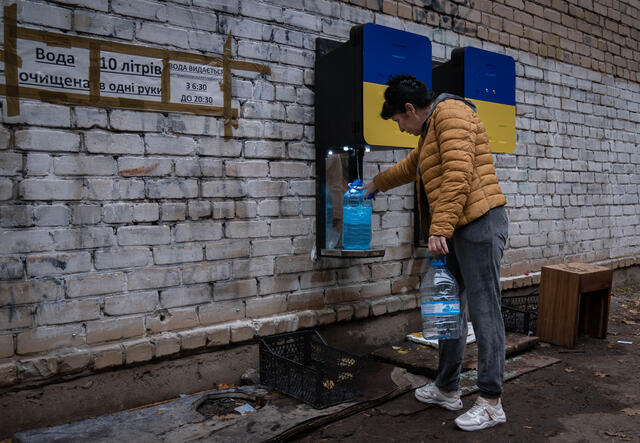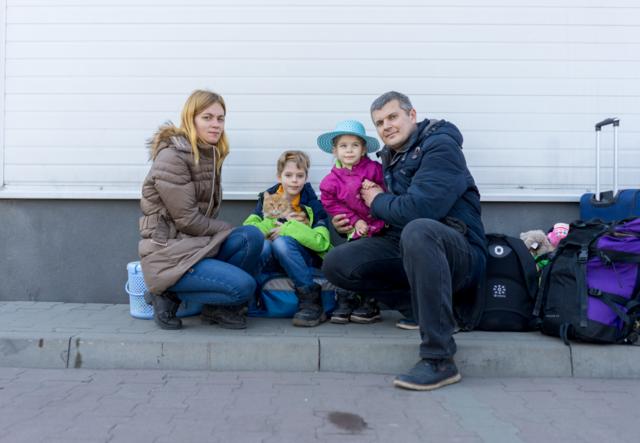
Ukraine: Europe’s largest displacement crisis in decades
Here are four reasons why the IRC’s 2023 Emergency Watchlist ranks Ukraine as one of the top 10 countries most likely to experience a worsening humanitarian crisis in 2023.

Here are four reasons why the IRC’s 2023 Emergency Watchlist ranks Ukraine as one of the top 10 countries most likely to experience a worsening humanitarian crisis in 2023.
The escalation of the war in Ukraine in February 2022 has sparked the largest displacement crisis Europe has seen since WWII, and has thrust the country onto the IRC’s Emergency Watchlist for the first time since 2017.
Attacks have intensified since October 2022, destroying power, water supplies and other critical infrastructure, and putting millions of people in need of humanitarian assistance. Risk to civilians will persist as fighting continues.
Find out more about the humanitarian crisis in Ukraine and why the IRC expects the situation to deteriorate further in 2023.
More than 8,300 civilians have been killed since the war began in February 2022, although the actual figure is likely to be much higher. The use of airstrikes and missiles puts civilians and infrastructure at risk, even outside areas of active combat. There have also been documented instances of torture, sexual violence and murder of civilians.

Damage to energy, water sources and other critical infrastructure has deprived Ukrainians of essential services. As Ukraine emerges from a harsh winter season, millions of people remain cut off from essential life saving assistance. Russian missiles have repeatedly targeted Ukrainian energy infrastructure, which could result in millions of individuals, including those in the capital city of Kyiv, losing access to basic necessities such as water, electricity and heating.
The cost of the war is most apparent in areas that have endured intense conflict, where the IRC is focusing its humanitarian efforts. In the east, the country’s health care system is crumbling and hospitals are out of medicine. Some villages have not had electricity for over a year, while cities like Kharkiv, Dnipro and Donetsk are overwhelmed with people fleeing from surrounding areas caught in the crossfire – 44 million square miles of housing have been destroyed or damaged. Aid workers cannot reach people trapped behind active front lines. Land mines pose a deadly threat for civilians and hamper recovery.
Missile strikes have damaged half of Ukraine’s power grid. Estimates put the cost of repairing the country’s infrastructure at $138 billion and rising. The destruction of water lines and sewers has increased the risk of water-borne illness and left 16 million people without sanitation services and hygiene support.

The war created Europe’s fastest and largest displacement crisis in decades, forcing over 8 million Ukrainians to flee the country. While millions have returned, many are unable to do so because of the ongoing fighting and the risk of missile strikes far from the frontlines. Another 5.4 million people remain internally displaced. As long as the conflict continues, more people will be displaced and forced to flee to neighboring countries like Poland, Moldova, Romania and Slovakia.

An IRC report revealed that 90 percent of Ukrainian businesses have suffered as a result of the war, which slashed Ukraine’s purchasing power nearly in half. The country’s unemployment rate stood at 24.5 percent at the end of 2022; the rate of inflation, nearly 25 percent in February 2023, is making it difficult for people to meet their basic needs.
“It is difficult to speak of rebuilding the Ukrainian economy when the war continues to damage infrastructure, force people to flee in search of safety, and disrupt everyday life and business operations,” says Josie Scott, the IRC’s emergency economic recovery and development coordinator in Ukraine. “It is vital that we continue to meet humanitarian needs, but also protect and restore livelihoods.”
The IRC launched an emergency response to the war in Ukraine in February 2022, working directly on the ground and with local partners across the region to reach those most in need. Inside Ukraine, we are focusing on conflict-affected areas in the east and southeast, improving access to health care, providing cash assistance and emergency supplies, and creating safe spaces for women and children, and other protection support.
We are also assisting Ukrainian refugees in Bulgaria, the Czech Republic, Hungary, Moldova, Poland, Romania and Slovakia, as well as in Germany, Italy, Greece, the United Kingdom and the United States. We support them with cash assistance, safe healing and learning spaces, psychological support, and information on civil rights and public services. We also help refugees integrate into their new communities.
“The world must not forget Ukraine,” warns Marysia Zapasnik, IRC country director for Ukraine. “It is vital that donors sustain the humanitarian efforts to support the people in need in Ukraine – and those displaced beyond its borders.”
Learn more about the crisis in Ukraine and what the IRC is doing to help.
Read more about the top 10 crises the world can’t ignore in 2023, learn how the IRC predicts which countries will face a worsening humanitarian crisis and download the full 2023 Emergency Watchlist report for profiles of all 20 crisis countries on the IRC's list.
* Last name excluded for privacy